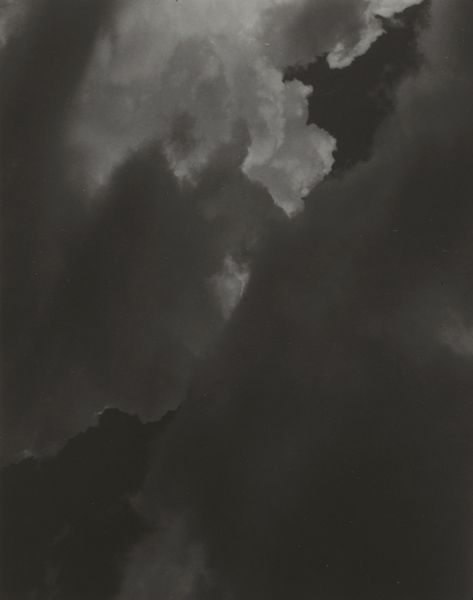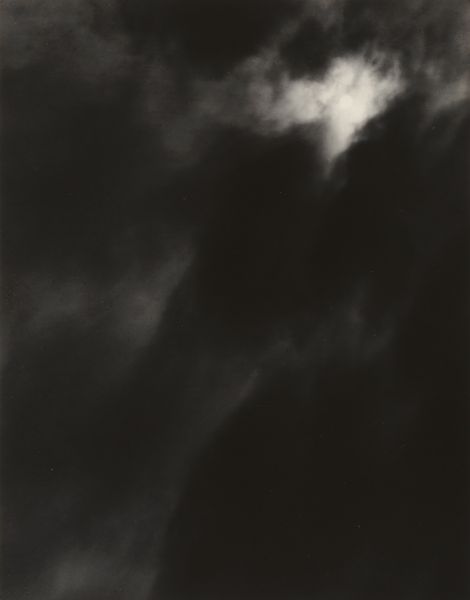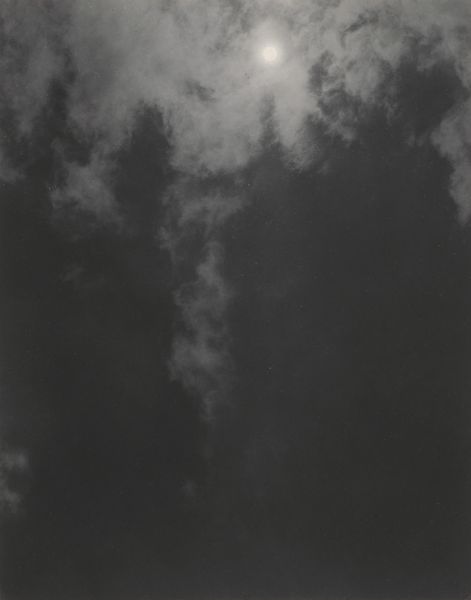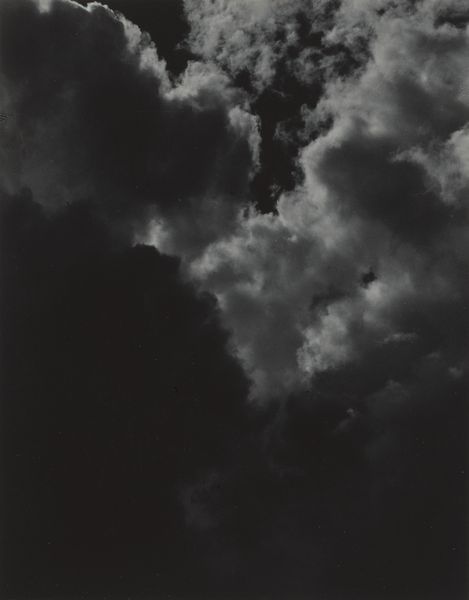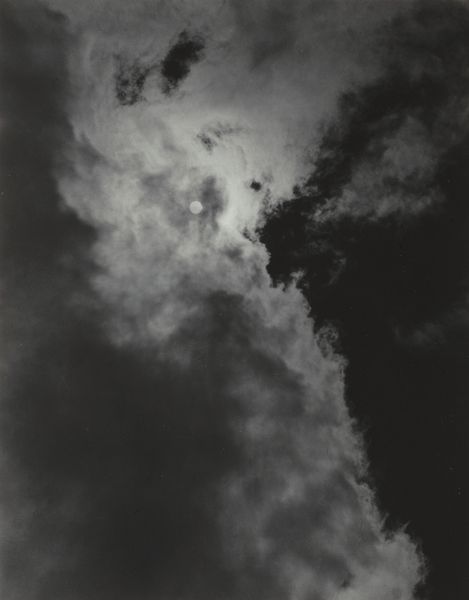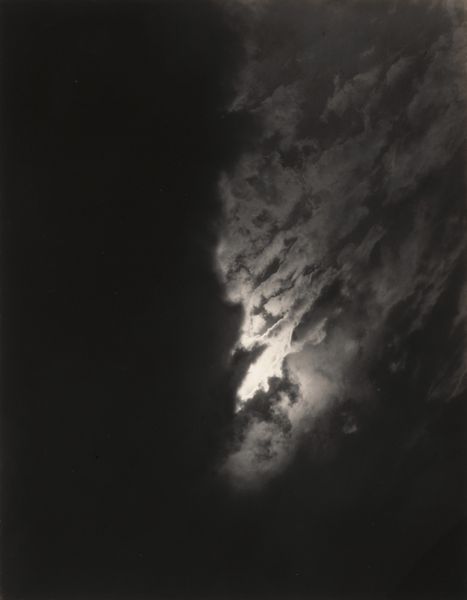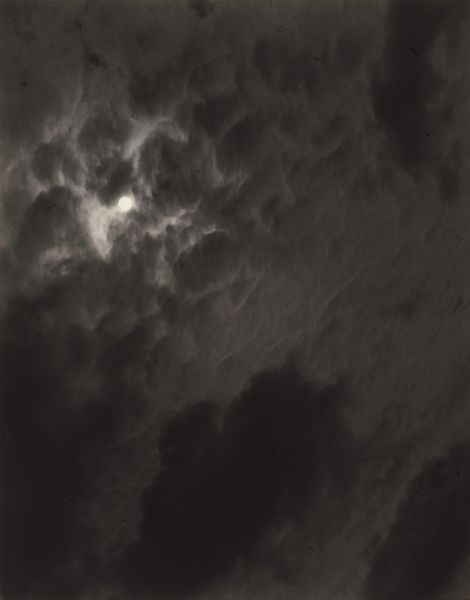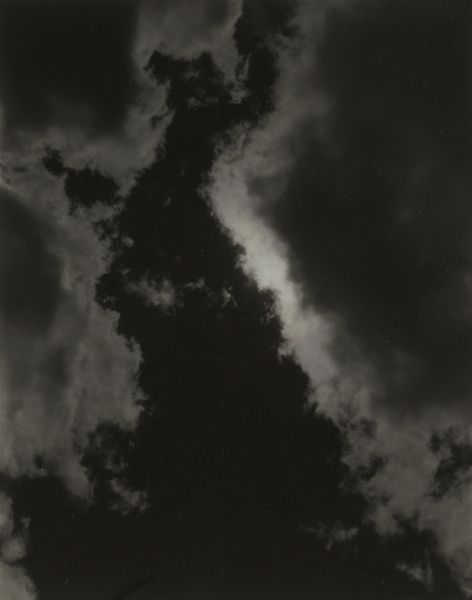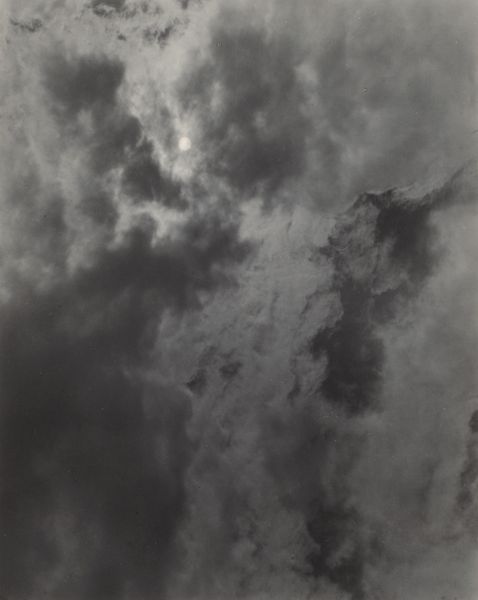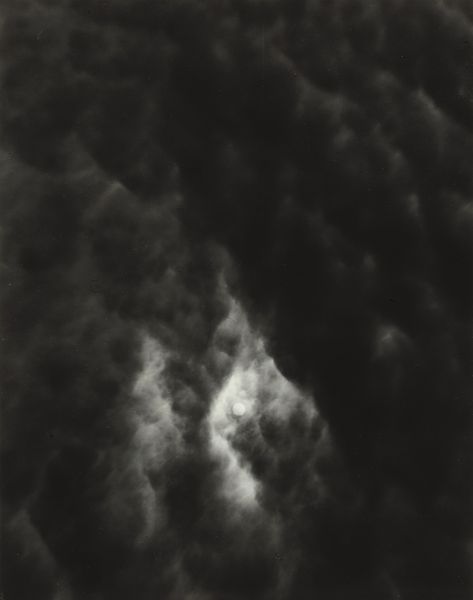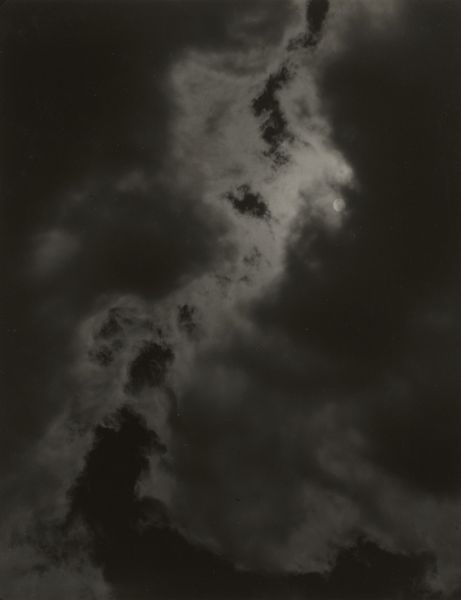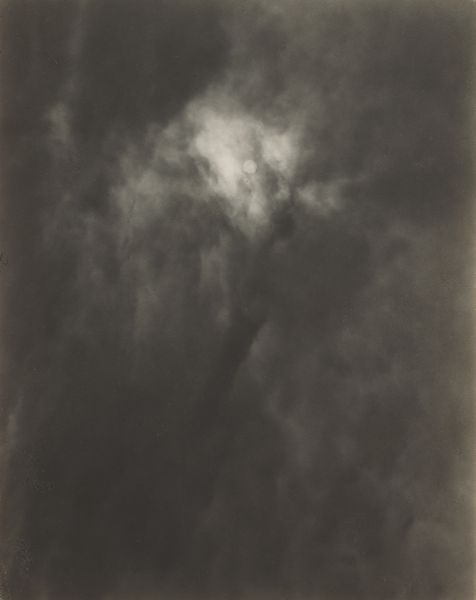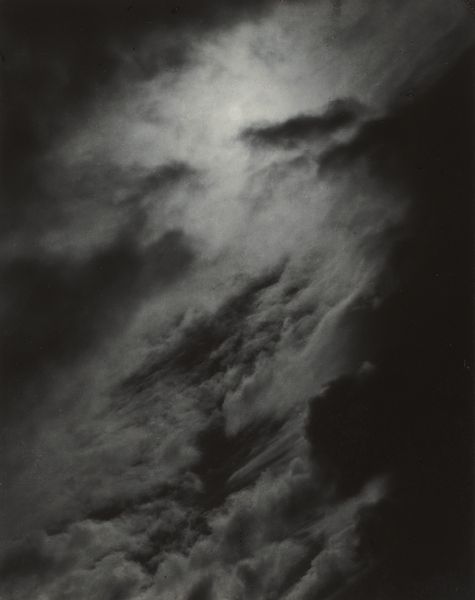
photography, gelatin-silver-print
#
black and white photography
#
pictorialism
#
landscape
#
photography
#
gelatin-silver-print
#
monochrome photography
#
monochrome
#
monochrome
Dimensions: image: 11.7 x 9.3 cm (4 5/8 x 3 11/16 in.) sheet: 13.8 x 9.8 cm (5 7/16 x 3 7/8 in.) mount: 34.2 x 27.5 cm (13 7/16 x 10 13/16 in.)
Copyright: National Gallery of Art: CC0 1.0
Editor: Alfred Stieglitz's "Songs of the Sky," created in 1923, is a gelatin-silver print dominated by clouds. The stark contrast between light and dark creates a dramatic, almost unsettling mood. What can you tell me about how Stieglitz's process shaped this work? Curator: Notice how the gelatin-silver print emphasizes the texture and form of the clouds. The photographic process itself, with its chemical reactions and specific darkroom techniques, directly shapes our perception. Consider the labor involved, from sourcing materials to the act of capturing and developing the image. Editor: So, the conscious selection and manipulation of materials and techniques is key? It’s not just about what is depicted, but *how* it's depicted. Curator: Exactly. Stieglitz chose photography – a medium seen by some as purely mechanical – to express something deeply personal. By examining the materials and labor that constitute photography, we move past aesthetic appreciation to question traditional boundaries. Does the 'craft' involved in this process elevate it beyond simple documentation? Editor: That’s interesting. Does the historical context impact this perspective? Curator: Absolutely. The Pictorialist movement, to which Stieglitz belonged, sought to legitimize photography as fine art. By manipulating the printing process, they emphasized the artist's hand, thereby challenging the notion that photography was simply a recording device. Are we looking at art, or industry? And where does the meaning derive from that? Editor: So, by foregrounding the labor and material choices, we're reconsidering what we define as 'art'. Thank you, this was really insightful. Curator: My pleasure! Reflecting on materiality gives us insight into the meaning. It pushes us to consider the socioeconomic implications inherent in the artistic practice.
Comments
No comments
Be the first to comment and join the conversation on the ultimate creative platform.

